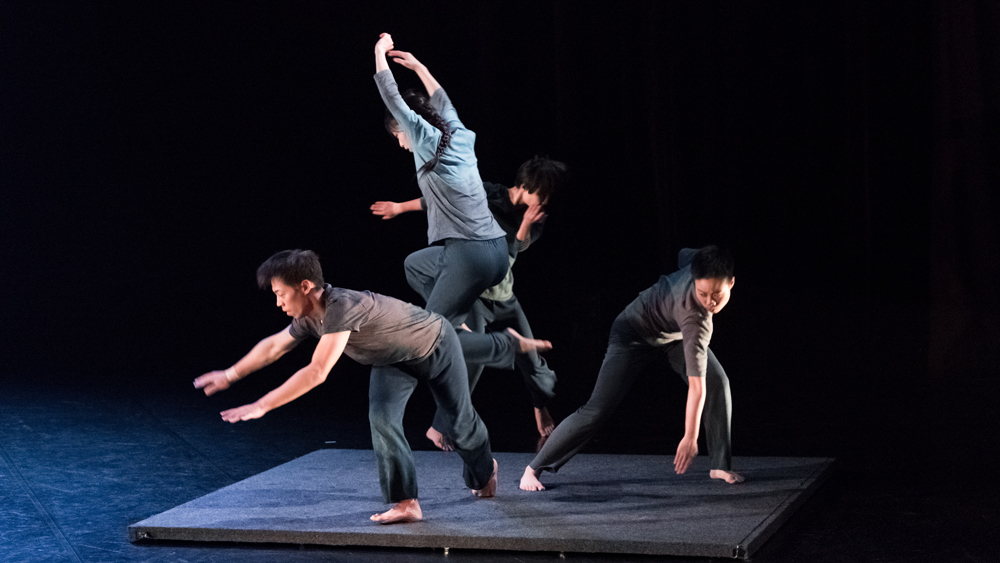攝影 湯詠茹 / Photos by Y. R. Tang
25週年紀念舞作《夷希微的凝視》
夷希微的凝視 The Gaze of Yi-Xi-Wei
《夷希微的凝視》想要以創作者的潛意識與觀眾的潛意識對話,因為在我們每個人的心裡都有一面鏡子,我們以這面鏡子照映自己所處的世界,於是我們對外界有了自己的理解與想像,世界因而對我們也開始有意義起來。作品中以一個滑動的平面作為舞作的發想,因為身為舞者最基本的條件就是掌握自己的重心,當地面的穩定產生了變化,舞者又如何在一個充滿挑戰的處境中生存?創作者在想的是舞蹈的意義,對於想要告訴觀眾什麼事情並不感興趣,因為觀眾並沒有需要知道任何關於創作者的事。作品只想提供一個介面讓觀眾去發現自己心中的小故事,只有這樣作品才會對觀眾有獨一無二的意義。
Dance is an art that cannot be clearly described for its extralinguistic directness. We dance to express our feeling. It is impossible to even try explaining it through any thoughtful language and be to the point. Dance is actually a non-verbal expression.
At the beginning of chapter fourteen of his Dao De Jing, the philosopher Lao-tse said, “looking but cannot see is yi; listening but cannot hear is xi; grasping but cannot hold is wei.” This is very much similar to what I felt about dance. You see it but just cannot fix it; you hear it but just cannot understand it; you want to grab it but nothing is there in your hands. The choreographer, Ming-shen Ku thinks dance lovers can understand and will have a special affinity with this uncertainty. This special quality of uncertainty hence becomes the basic idea of this dance.
The Gaze of YI XI WEI tries to establish a dialogue of subconsciousness between the choreographer and the audience. There is a mirror inside us, with which we reflect the world. This reflection is our understanding or imagination of the world, bringing meaning to us, too. A sliding surface is the subject matter of this dance. As dancers, we try to control our center of gravity. But how would it be like when the surface is challengingly unstable? As the choreographer, Ku has been thinking about the meaning of dance. She is not interested in what the dance is telling the audience, especially anything about herself. An interface is what she would like to provide here. With which the audience will discover the small stories that lay inside their heart—a dance that is unique for everyone.






